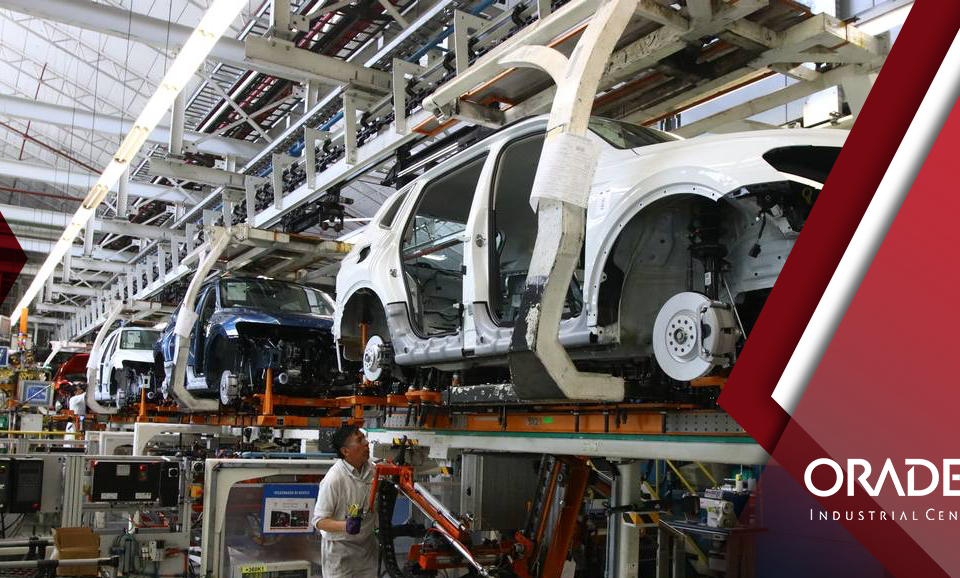5G technology key to Mexico’s digital transformation and economic recovery

Industrial parks boost manufacturing in Mexico
5 October, 2020
China dominates investment intentions in Mexico
11 November, 2020
5G technology key to Mexico’s digital transformation and economic recovery
Rolling out 5G technology would transform various market sectors in Mexico, and the automotive manufacturing sector could be one of the first to benefit.
There is no doubt that the phenomenon of digital transformation is nothing new; it is a trend that came to light a few years ago, with varying speeds of progress in different countries and industries.
The health crisis this year accelerated the transition towards digital, and generated an opportunity for growth, development and implementation of new technologies, including 5G networks.
At a virtual event at the end of August, Nokia and Omdia presented a study stating that 5G networks could trigger digital transformation and productivity in Mexico, helping the country recover faster from the economic crisis caused by the COVID-19 pandemic.
In addition, according to their study, this technology could add a basis point to Mexico’s Gross Domestic Product (GDP), making this technology one of the important driving forces for economic recovery.
One of the strengths of 5G technology is that it is widely used, and can involve a variety of industries, both for consumers and businesses. Experts, institutions and organizations say that the agricultural, tourism, oil and maquila sectors are the most economically important in Mexico. They also agree that they require a new drive, so the push for 5G in the digital transformation will be key.
In the long term, by 2035, 5G technology in Mexico will generate an economic and social impact of $730 billion dollars across various sectors: $137 billion in Information and Communications Technology (ICT), $134 billion in manufacturing, $113 billion in services, $75 billion in trade, $52 billion in real estate and $51 billion in construction.
The deployment of 5G across the world
Commercial 5G network launches in the United States and South Korea have captured the world’s attention with the promise of extremely high streaming speeds, and latency comparable to that of the human brain.
China and the Middle East already had 5G networks by the end of 2019, and in total there were more than 40 commercial 5G networks worldwide.
There are only a few networks with this technology in Latin America, in the Caribbean and Uruguay, in addition to several test activities, so the delay in the deployment of these networks in this region is due to the late adoption of 4G technology. According to Nokia and Omdia’s study, 4G currently reaches 52% of phone lines, 3G reaches 33%, and 2G continues to operate in 13% of lines, although 2G is expected to disappear after 2024.
The impact of 5G technology in Mexico
The study reveals that deploying 5G in Mexico will impact and transform at least three sectors of telecommunications: the mass market for mobile broadband, residential fixed broadband and networks for large companies.
This is due to Internet users’ increased need for stability and speed in connections. Therefore, 5G is expected to be rapidly adopted in the mobile broadband market, and it is estimated that 25% of these lines will have 5G by 2023.
Currently, the residential broadband market is mostly powered by fiber optics, which is why 5G FWA solutions could become an alternative, as it offers operators greater flexibility and lower operational deployment costs.
This could result in a business model with benefits for both companies and users, as the companies are given the opportunity for profitable growth, while users are given a better experience.
The third sector, networks for large companies, could benefit from 5G Network Slicing as it enables the creation of private 5G networks, which beat current networks for large companies in all respects (deployment flexibility, latency, speed, security and customizability).
According to the study, 5G will start by being implemented in:
- Key economic sectors that generate high cash flows, and are valuable to both governments and operators.
- Large corporations that are capable of investing in digital transformation, particularly multinational companies that can repay these investments between various countries and operating sites.
- Proven cases of use for verticals, clearly demonstrating the benefits of 5G-powered digital transformation.
Verticals pioneering 5G technology in Mexico
According to the study, the manufacturing sector will be the first sector in Mexico to implement and benefit from 5G, namely, automotive and auto parts manufacturing will take the lead.
Currently, Mexico is the primary car manufacturer in Latin America, and fourth worldwide with an annual production of 4 million units, of which 82% are exported to other countries.
In addition, the entry into force of the USMCA is forcing companies to make changes in production lines, simultaneously providing an opportunity for the implementation of digital transformation projects. An advantage of this sector is its presence in just a few cities, facilitating the deployment of 5G networks.
Other manufacturing areas that could become pioneers in 5G in Mexico are the aerospace, medical equipment and transportation sectors.
Oradel Industrial Center fully developed industrial lots for the construction of industrial buildings. It also offers Class A buildings with or without tenant improvements. It is strategically located only 10 miles from the international bridges to the United States.





